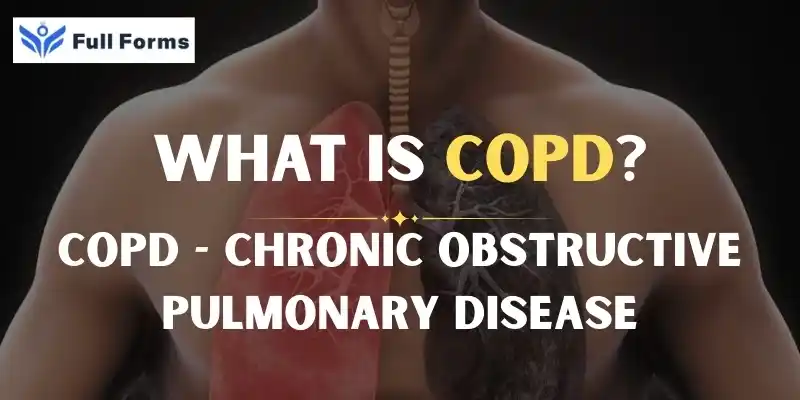Chronic Obstructive Pulmonary Disease
(COPD)

Description
Chronic Obstructive Pulmonary Disease (COPD): A Silent Fight for Every Breath
Chronic Obstructive Pulmonary Disease, or COPD for short, is a long-term lung disease that makes it hard to breathe. It gets worse over time, and doctors often don't catch it until the disease has gotten a lot worse. Millions of people around the world have COPD, but many don't know they have it until their symptoms get bad.
To manage COPD and improve your quality of life, it's important to know what it is, what causes it, what symptoms it has, how to prevent it, and how to treat it.
What is COPD?
There are many lung diseases that make it hard to breathe and block airflow. COPD is one of these diseases. The two most common diseases that cause COPD are:
- Chronic bronchitis is when the lining of the bronchial tubes gets inflamed, which makes you cough and produce mucus all the time.
- Emphysema is damage to the alveoli (air sacs) in the lungs that makes it harder for oxygen to get into the blood.
Many people with COPD also have asthma. It mostly affects older people and is most often linked to being around harmful substances for a long time, especially cigarette smoke.
Causes and Things That Make You More Likely to Get Them
Smoking is the main cause of COPD. About 85–90% of COPD cases are directly linked to smoking. But there are other things that help it grow:
- Long-term exposure to chemical fumes, dust, or air pollution
- Smoke from other people
- Genetic disorders such as alpha-1 antitrypsin deficiency
- A history of frequent respiratory infections during childhood
People over 40 are more likely to get the disease, but younger people with certain risk factors can also get it.
Signs of COPD
Most of the time, COPD symptoms come on slowly and get worse over time. At first, the symptoms might be mild and mistaken for a cold or getting older. Some common signs are:
- Cough that won't go away
- Shortness of breath, especially when you move around
- Wheezing
- Tightness in the chest
- More mucus is being made
- Tiredness
- Infections of the lungs that happen often
People may lose weight, have swollen ankles, and have cyanosis (blue lips or fingernails due to lack of oxygen) in very bad cases.
Diagnosis
Doctors usually do a spirometry test to find out if someone has COPD. This test measures how much air a person can breathe in and out and how quickly they can do it. There may be other tests, such as:
- X-rays or CT scans of the chest
- Tests of arterial blood gas to see how much oxygen is in the blood
- Tests for lung function
Early diagnosis is crucial to impede progression and avert complications.
Care and Treatment
There is no cure for COPD, but there are treatments and changes to your lifestyle that can help with symptoms and make your life better.
1. Drugs
- Bronchodilators: These drugs relax the muscles around the airways, which makes it easier to breathe.
- Corticosteroids that you breathe in: These lower inflammation in the lungs.
- Combination inhalers are a mix of steroids and bronchodilators.
- Antibiotics: Used to stop or treat infections in the lungs.
2. Therapy with Oxygen
People with severe COPD may need extra oxygen to keep their blood oxygen levels healthy.
3. Rehabilitation for the lungs
This includes exercise training, learning, and advice on what to eat to make your lungs work better and give you more energy.
4. Surgery
In more serious cases, doctors might think about doing lung volume reduction surgery or lung transplants.
Changes in Lifestyle
People with COPD need to make changes to their daily lives. Some important changes are:
- Stop smoking. This is the most important thing you can do to protect your lungs from more damage.
- Stay inside on days when the air is dirty and stay away from chemicals and dust to stay away from air pollution.
- Exercise often; within reason, being active can help your endurance and lung strength.
- Eat a healthy diet. Foods that are high in nutrients help keep your body strong and your immune system healthy.
- Get vaccinated. Vaccines for the flu and pneumonia can help keep you from getting respiratory infections that can make COPD worse.
Having COPD and Living With It
COPD can make daily life very difficult, but with the right help and care, people can learn to live with it. Regular checkups with doctors, using inhalers correctly, and being disciplined in your daily life can make you live longer and feel better.
Support groups and mental health counseling are also helpful because COPD isn't just a physical illness; it can be hard on your mind and emotions as well.
Avoidance
It's always better to stop something from happening than to treat it. To lower the chance of getting COPD:
- Don't start smoking, and if you do, stop right now.
- If you work with harmful particles, take steps to protect your lungs.
- Avoid smoke, dust, and strong fumes to keep the air inside clean.
Final Thoughts
Chronic Obstructive Pulmonary Disease (COPD) may be a lifelong condition, but its effects can be greatly lessened with awareness, early detection, and proper care. If you take charge of your health, make smart choices about how you live, and work closely with your doctors, you can breathe easier and live better, even if you have COPD.
